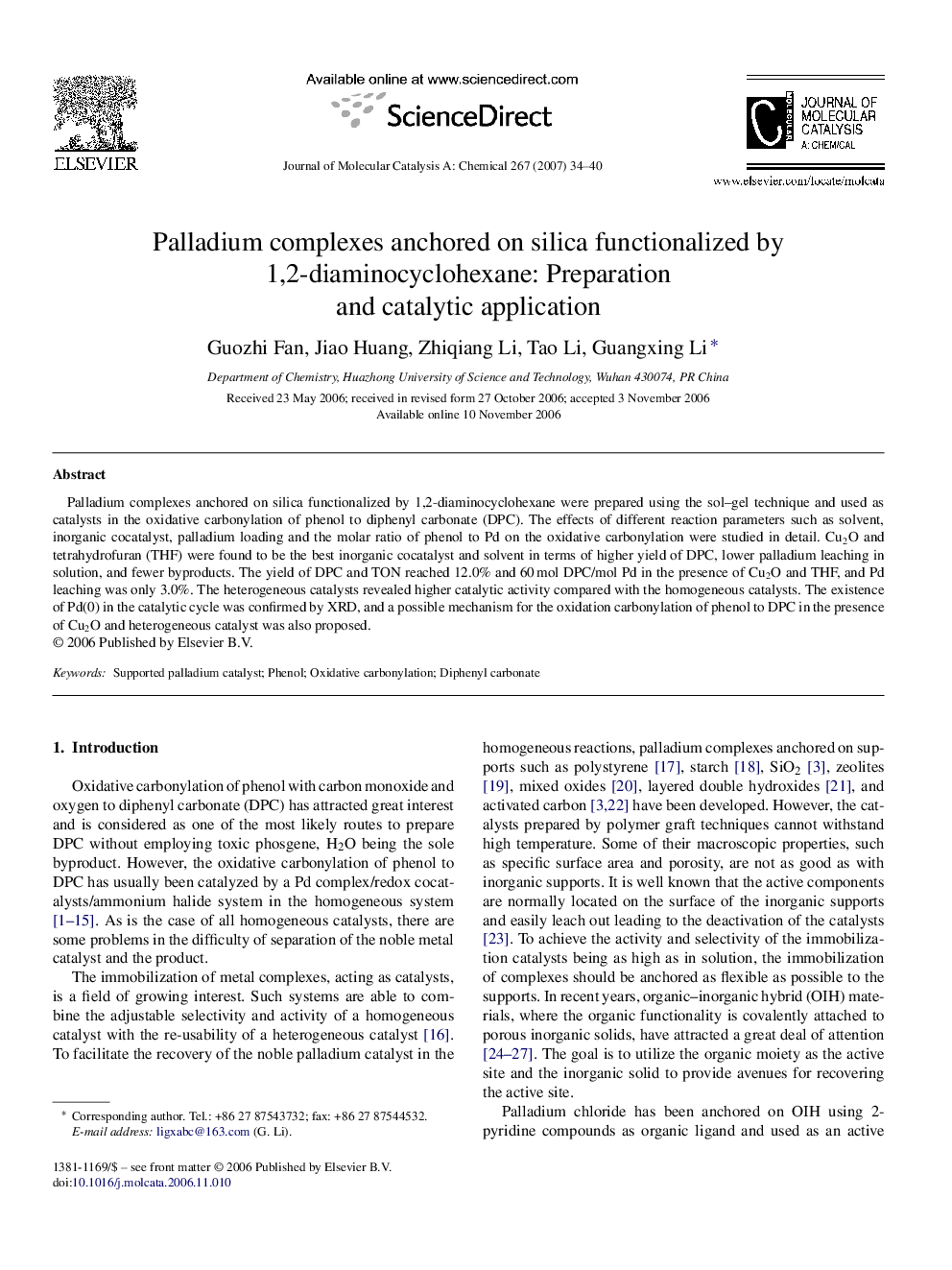| Article ID | Journal | Published Year | Pages | File Type |
|---|---|---|---|---|
| 68774 | Journal of Molecular Catalysis A: Chemical | 2007 | 7 Pages |
Palladium complexes anchored on silica functionalized by 1,2-diaminocyclohexane were prepared using the sol–gel technique and used as catalysts in the oxidative carbonylation of phenol to diphenyl carbonate (DPC). The effects of different reaction parameters such as solvent, inorganic cocatalyst, palladium loading and the molar ratio of phenol to Pd on the oxidative carbonylation were studied in detail. Cu2O and tetrahydrofuran (THF) were found to be the best inorganic cocatalyst and solvent in terms of higher yield of DPC, lower palladium leaching in solution, and fewer byproducts. The yield of DPC and TON reached 12.0% and 60 mol DPC/mol Pd in the presence of Cu2O and THF, and Pd leaching was only 3.0%. The heterogeneous catalysts revealed higher catalytic activity compared with the homogeneous catalysts. The existence of Pd(0) in the catalytic cycle was confirmed by XRD, and a possible mechanism for the oxidation carbonylation of phenol to DPC in the presence of Cu2O and heterogeneous catalyst was also proposed.
Graphical abstractPalladium complexes anchored on organic–inorganic hybrid materials modified by 1,2-diaminocyclohexane were prepared. The heterogeneous catalyst proved to be an excellent catalyst for the oxidative carbonylation of phenol to diphenyl carbonate (DPC). Figure optionsDownload full-size imageDownload as PowerPoint slide
